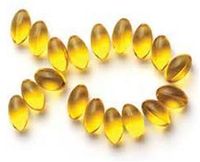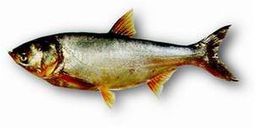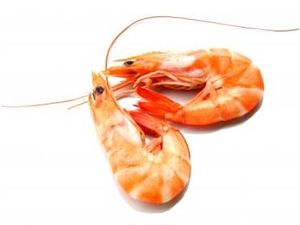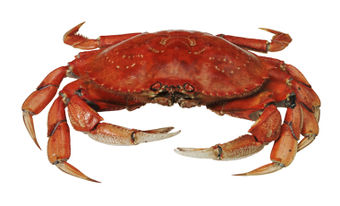Marine derived nutraceutics
Marine derived nutraceutics
By definition, nutraceuticals are substances that may be considered as food or food components, beneficial for human health and helping to prevent civilization-related diseases [1]. Nutraceuticals are food products and are not considered drugs although they have a specific influence on the human body (weaken, strengthen or modify the physiological and metabolic functions).
The marine environment offers a wide range of food or food components that can be considered nutraceuticals, a few examples are bioactive peptides, fish oils, fish proteins, seaweeds, macroalgae, microalgae, amino acids, omega-3 oils and all kinds of phytochemicals. All previous mentioned substances have their own positive effect on the human body.

Fig 1. Omega-3 oils, essential fatty acids that can be found in fish.
Marine Fauna
Each year a tremendous amount of marine waste is produced that has the potential to serve as nutraceuticals. Ireland for example produces 64 000 ton/yr through products coming from aquaculture, fishing and fish processing [2]. These byproducts consist of heads, skins, fins, frames, trimmings, shellfish, crustacean shell waste etc. [3]. Biotechnology offers the opportunity to use this waste in the form of peptide mining. The waste products of numerous fish are a source of bioactive peptides that can be used as a source of nitrogen and amino acids [3]. These peptides have a lot of potential functions such as immunomodulatory-, antibacterial-, antitrombotic- and antihypertensive activities [4]. Bioactive peptides can also be found in mollusks and crustacean waste products, but these sources are less studied.
Nowadays omega-3 oils are added in various food sources, ranging from bakery products to nutrition bars. These omega-3 oils are extracted from different sources such as fish (for example: silver carp, Hypophthalmichthys molitrix) (fig. 2) [5] and algae [6]. The fact that omga-3 oils have a protective effect against cardiovascular diseases is well established. Less known is that omega-3 fatty acids have other important potential applications such as prevention from atherosclerosis, protection against arrhythmias, reduction of the blood pressure, benefits for diabetic patients, treatment of manic-depressive illness, reduction of asthma symptoms, protection against chronic obstructive pulmonary diseases, alleviation of symptoms of cystic fibrosis, prevention from various cancers, better bone health and improvement of the brain functions in children [7].

Fig 2. Hypophthalmichthys molitrix.
Fish are also a good source of taurine, an essential amino-acid for the human body. This amino-acid is found in cod, mackerel, salmon, albacore tuna, ray, shark etc. [7]. Taurine has various potential applications including the reduction of blood pressure, the improvement of cardiac performances and the reduction of the cholesterol level [8]. Fish bones, on the other hand, are an excellent source of calcium. The difficulty here is the need for transformation of fish bones into an edible form. Grinded into powder it can be inserted in products such as surimi. [9]. The intake of a healthy amount of calcium helps to prevent or treat diseases such as osteoporosis, Hypoparathyroidism, high blood pressure, Premenstrual Syndrome (PMS), obesity, weight loss, high cholesterol and Rickets [10]. Shrimps and crab (fig 3, 4) are good sources of chitin and chitosan [11]. These molecules support the acceleration of wound healing [12], are involved in immune-enhancement, disease recovery and are used as dietary fibers [7]. Chitin and chitosan are present in the scale of these animals and need to be extracted in order to implement these molecules in other food sources.


Fig 3, 4. Shrimps and crab are good sources of chitin and chitosan.
Besides being a great source of healthy food and a boost for your immune system, marine fauna also has a potential application in the bio-mining of these commodities for implementation in our ordinary food. This could give rise to more kinds of enhanced food such as pasta implemented with bioactive peptides [7].
Marine Flora
Macroalgae contain a significant amount of soluble polysaccharides, antioxidants and dietary fibers [7]. They are also a source of different kinds of phytochemicals such as vitamins, fatty acids and phycobilins [7]. These molecules have the potential to control thrombosis, tumors and obesity [13]. Algae can also be a source of bioactive nitrogenous compounds [14] .
Microalgae can be used to enhance the nutritional value of food and animal feed, a lot of research about the presence of possible harmful toxic compounds is still needed though.[7]